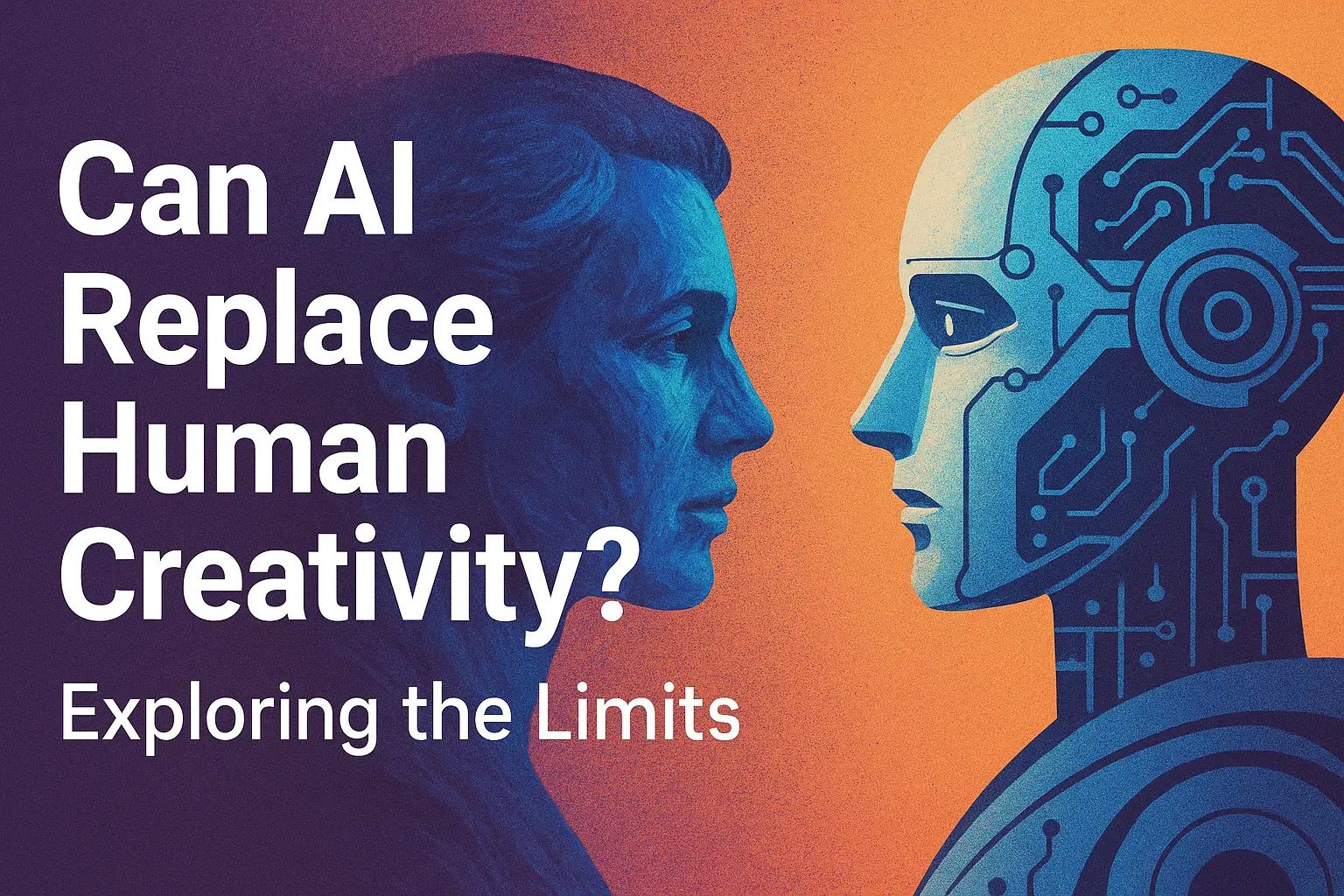Artificial Intelligence has made remarkable strides in areas once thought to be uniquely human—language, problem-solving, and even artistic expression. From AI-generated paintings to music compositions and written poetry, machines are increasingly contributing to the world of creativity. But a fundamental question remains: Can AI truly replace human creativity?
In this article, we’ll explore what creativity means, what AI is capable of, and where the boundaries still lie between artificial and human imagination.
What Is Creativity?
Creativity involves more than simply generating ideas—it includes originality, emotional depth, intent, and the ability to connect seemingly unrelated concepts. It’s not just about creating something new but something that resonates on a human level.
Human creativity is often:
- Intuitive: Driven by instinct and emotion
- Contextual: Influenced by culture, experience, and history
- Evolving: Inspired by failures, constraints, and reinterpretations
- Personal: Reflective of individual identity and expression
AI, on the other hand, follows patterns derived from data. This difference raises an important question: Is creativity defined by the process or the result?
How AI Generates Creative Content
AI can create original content through techniques like:
1. Generative Adversarial Networks (GANs)
Used in image and video generation, GANs consist of two neural networks—one creates content, the other critiques it. They “compete” until the generated result is indistinguishable from real data.
Example: AI-generated art that wins competitions or mimics famous painting styles.
2. Natural Language Processing (NLP)
Models like ChatGPT use transformer-based architectures to write poetry, scripts, essays, and even books.
Example: AI writing full-length novels or co-writing movie screenplays.
3. Music Composition Algorithms
AI systems can analyze thousands of songs and create new compositions in the style of classical, jazz, EDM, or any genre.
Example: Tools like AIVA and Amper Music generate scores for games and films.
4. Style Transfer and Image Remixing
AI can apply one artist’s style to another subject, blending visuals to create “new” artworks.
Example: Turning a photo into a Van Gogh-style painting using DeepArt.
The Strengths of AI in Creative Fields
- Speed and Efficiency: AI can generate thousands of ideas or variations in seconds.
- Inspiration Tool: Helps artists overcome creative blocks or explore new directions.
- Accessibility: Enables non-designers or musicians to create high-quality content.
- Consistency: Maintains brand voice or design language across large projects.
AI doesn’t get tired, distracted, or stuck. It thrives on patterns, making it excellent for enhancing human creativity—but not necessarily replacing it.
Where AI Falls Short
1. Lack of Original Thought
AI doesn’t have personal experiences, emotions, or motivations. It cannot “feel” inspiration or create from genuine human intention.
Example: A poem about grief written by AI may be technically perfect but emotionally hollow.
2. No Concept of Meaning or Context
AI struggles with nuance, cultural context, or irony. It may not understand what a piece of art truly means, even if it can replicate the form.
Example: AI may paint a beautiful landscape but not grasp the story behind the scene.
3. Ethical and Ownership Issues
If AI generates content based on copyrighted material, who owns the output? Should AI be credited as an artist or merely a tool?
4. Limited Adaptability Without Human Guidance
AI can’t judge when rules should be broken. Human creativity often emerges from breaking conventions—something AI isn’t designed to do autonomously.
Collaboration, Not Competition
Rather than replacing human creativity, AI is best seen as a collaborator—a tool that expands what we can imagine and produce.
Real-world collaborations include:
- Writers using AI to brainstorm plot twists or develop dialogue
- Designers exploring thousands of logo variations with AI support
- Musicians using AI-generated melodies as creative springboards
In many ways, AI is like a digital co-pilot—able to suggest and execute but still guided by human intention.
Industries Being Transformed by Creative AI
- Advertising: AI helps generate slogans, social media captions, and ad variations.
- Fashion: AI analyzes trends and generates design concepts.
- Film and Animation: AI assists with storyboarding, scriptwriting, and voice synthesis.
- Education: AI creates interactive learning materials and adaptive storytelling tools.
- Gaming: Procedural content generation expands game worlds and storylines.
Final Thoughts: The Human Edge in Creativity
AI is powerful—but it lacks soul. It cannot dream, feel heartbreak, or find beauty in chaos. These qualities are the essence of human creativity, born from our experiences, culture, and consciousness.
So, can AI replace human creativity? Not quite.
It can enhance it, accelerate it, and even challenge it—but it cannot replicate the emotional and existential depth that only humans bring to the creative process. The future belongs to those who blend both: using AI to push boundaries while keeping creativity profoundly human.
